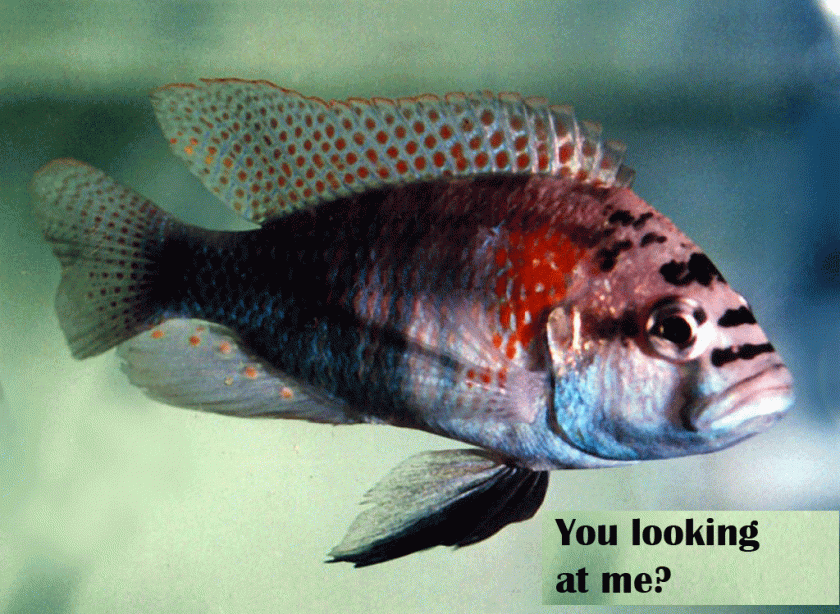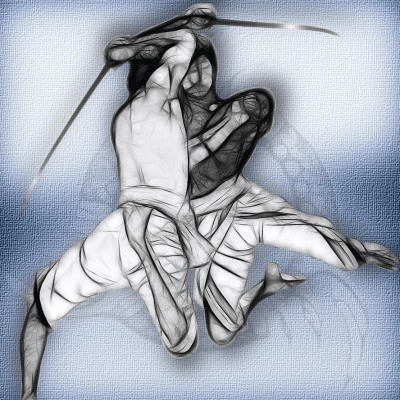One of the privileges of having cogitated our way to the top of the food chain is that we now have the luxury to cogitate on how we got to the top. Or whether other critters cogitate like us. Or not. We make rats scurry around mazes to help us understand how we think. Pigeons get OCD trying to resolve whether we make decisions before we form preferences or after. The Drosophila fly used to be a fly; now it’s basically a test tube with wings. Monkeys are always complaining that the only reason they exist is because Steve Pinker needs to write books on languages. And Mr. Toad of Toad Hall would sue for libel were he to read Lettvin et. al.’s classic description of frog life:
The frog does not seem to see or, at any rate, is not concerned with the detail of stationary parts of the world around him. He will starve to death surrounded by food if it is not moving. His choice of food is determined only by size and movement….His sex life is conducted by sound and touch. His choice of paths in escaping enemies does not seem to be governed by anything more devious than leaping to where it is darker. Since he is equally at home in water and on land, why should it matter where he lights after jumping or what particular direction he takes? He does remember a moving thing providing it stays within his field of vision and he is not distracted.
I couldn’t have described my teen years better. But seriously, animal research does throw light on the oddest things. Fish, for instance.
Apparently, fish can figure out that if fish A can outfight fish B, and fish B can outfight fish C, then very likely, A will be able to outfight C. This kind of reasoning is called transitive inference. It works for some relationships (“taller than”, “older than”, “darker than”, etc.) and doesn’t work for others (“married to”, “son of”, “is a friend of,” “loves,” etc.).
Piaget had studied transitive inference in children and found that age 7 marked a turning point; kids under 7 could not, in general, figure out that if stick A was longer than stick B was longer than stick C, then stick A was longer than stick C. There were two immediate criticisms of Piaget’s work. The first was that if he’d used pizza slices instead of sticks, the results would’ve been very different. The second, more valid complaint, was that his sample was flawed. He’d used humans, and every self-respecting Skinnerian knew that one didn’t learn about humans from experiments on humans. Especially, the French variety! What was Piaget trying to do? Put the rats and pigeons out of business?
So the other species were signed up, per usual, to study the problem for us. And over the decades, just as the Skinnerians had foreseen, primates, rats and birds all showed they too could get transitive inference. Of course, the problem had to be phrased right, that is, it had to be relevant to the lives of the species involved. Given this, it could be shown that the ability to do transitive inference wasn’t unique to humans. But what about fish? Were they “in da club,” as 50 Cents phrased it?
Yes, says Logan Grosenick, in a recent Nature paper. He and his colleagues, Tricia Clement and Russell Fernald, set up an elegant experiment in which they showed Astatotilapia burtoni fish acting as if they’d made a transitive inference. Briefly, the idea is this. Normally, dominance hierarchies in the highly territorial A. burtoni are determined by who wins the fights. Grosenick and his team set up a series of staged fights between A. burtoni fish. These fights were witnessed by “bystander fish,” also from the same species. The outcomes of the fights were known to the researchers, but not to the bystander fish. Suppose a bystander fish watched fish A beat fish B, which in turn beat fish C. Then the researchers found that the bystander fish would treat fish A as dominant over C even though it had never witnessed an actual fight between A and C. In other words, as Grosenick explains:
We were able to create an artificial dominance hierarchy for the bystander fish.
It’s a clever experiment, and it took a lot of work. It’s good, solid research. I have my doubts about their conclusions though. I think the experiment demonstrates an “as if” ability, not the ability itself. These fish act as if they do transitive inference, but that doesn’t mean they do it. It’s an important difference.
For example, every time we cross a street, we act as if we’re solving complex dynamical problems. In actual fact, we do nothing of the kind. We use thumb rules, quick non-quantitative reasoning, and do clever little things like ignoring information that doesn’t have to do with crossing streets. We don’t know the details yet, but I’d bet it’s not an exercise in non-holonomic control systems. Similarly, I don’t think transitive inference is needed for the bystander fish to figure out that it’s best to stay away from the dominant fish A. If the fish are not using transitive inference, then what are they using?
One possibility is that the reasoning is embodied. Take school yards. A new kid doesn’t need to know the history to avoid the alpha kids; their threatening demeanor and the other kids response to the alphas suffice. A tendency to mimic along with self-ranking could substitute for transitive inference. For example, it may be obvious to bystander fish X that C is submissive in the presence of A (perhaps via chemical signals, swimming patterns, stripes, etc.). And suppose X makes a judgment as to whether it can “take on” A. If X decides it can’t, then it sides with C; that is, it mimics C’s behavior. The ability to self-rank is reasonable, because fish gain experience in fights and become good at judging who they can take on. And mimicking is widely observed in flocks. This is not a particularly new counter-argument in the field of transitive inference. Nonetheless, the confusion between “as if” abilities and actual abilities continues to persist.
Embodied cognition– which is probably also what we use to cross streets– differs from logic or disembodied cognition. In logic, the context is unimportant; everything depends on the content and nothing but the content. Even semantic theories of logic are basically attempts to transform the context into content. Embodied cognition is the exact opposite; the context is the 800 lb gorilla, and controlling the context is the key to sensible action. The critter doesn’t think logically about a situation and then act. It acts, and the new situation this action generates makes the action a sensible one. Action, not logic, is the key to manipulating the world. Andy Clark gives the example of the bluefish tuna:
Consider, by way of analogy, the idea of a swimming machine; in particular, consider the bluefish tuna.(37) The tuna is paradoxically talented. Physical examination suggests it should not be able to achieve the aquatic feats of which it is demonstrably capable. It is physically too weak (by about a factor of 7) to swim as fast as it does, to turn as compactly as it does, or to move off with the acceleration it does. The explanation (according to the fluid dynamicists Michael and George Triantafyllou) is that these fish actively create and exploit additional sources of propulsion and control in their watery environments. For example, the tuna use naturally occurring eddies and vortices to gain speed, and they flap their tails so as actively to create additional vortices and pressure gradients that they then exploit for quick takeoffs and similar feats. The real swimming machine, I suggest, is thus the fish in its proper context: the fish plus the surrounding structures and vortices than it actively creates and then maximally exploits.”
Smart is being not-stupid. Clever is being not too smart. If the bluefish tuna were just smart, they’d reason themselves into mediocrity. Instead, the bluefish are clever. Ditto for the frog which is simple enough to “starve to death surrounded by food if it is not moving.” In real life, food moves, so the frog is clever (a) not to move too much and (b) eat only moving things. And ditto, I think, for the fishy transference of A. burtoni.


